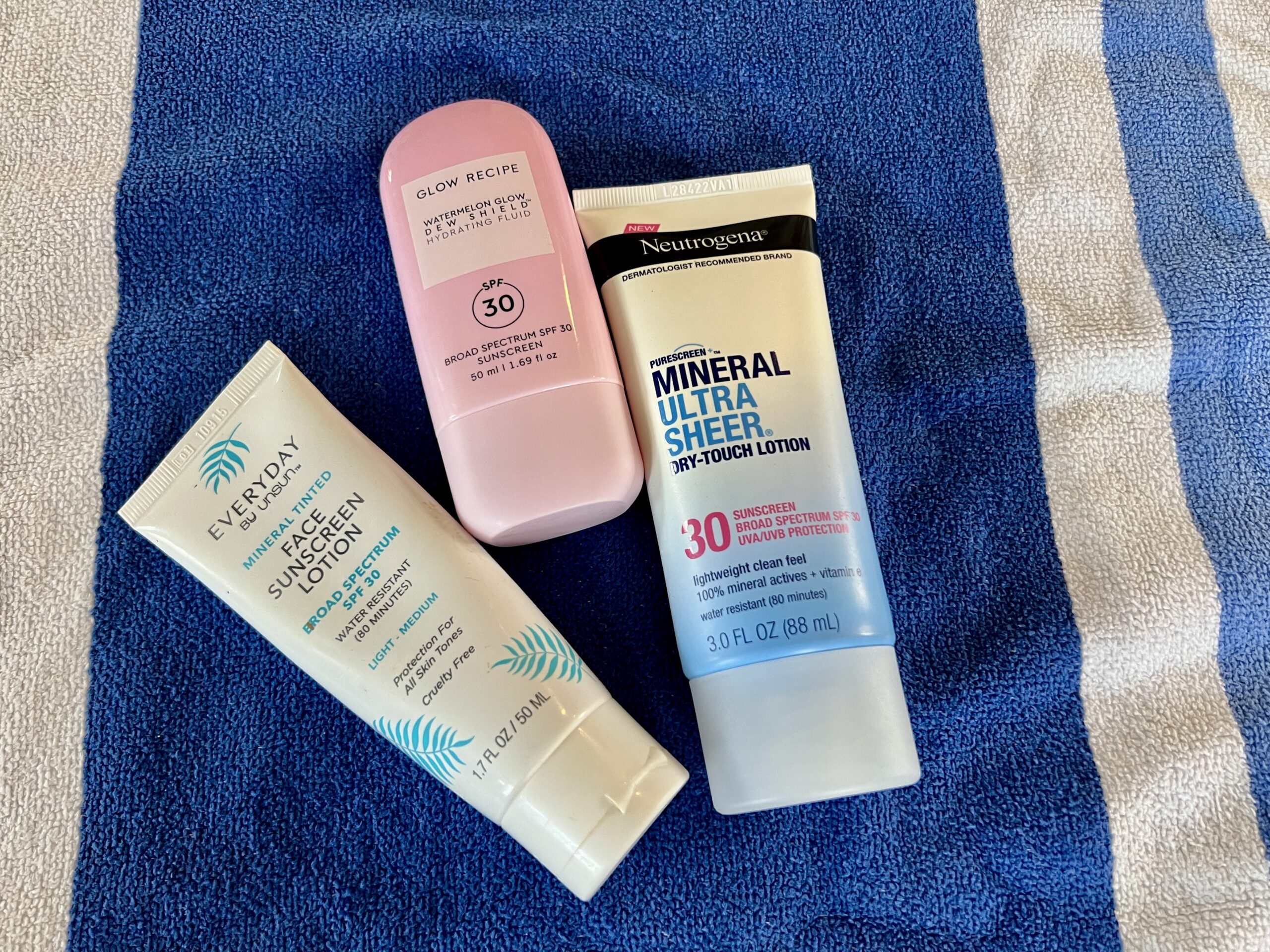History Comes Alive at West Hartford’s Sedgwick Middle School

Audio By Carbonatix
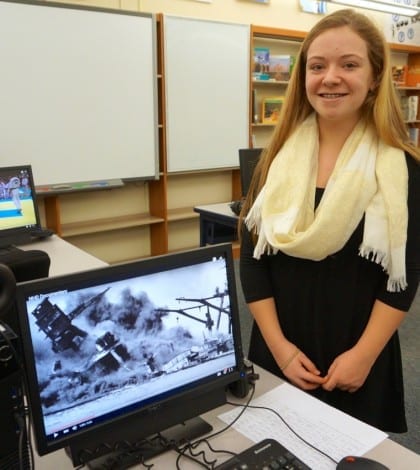
Libby Geisler's documentary on Pearl Harbor focused on how overall security in the U.S. increased after the tragedy. Photo credit: Ronni Newton
The celebration of National History Day culminated with a wide variety of projects presented by 270 eighth grade students at West Hartford’s Sedgwick Middle School.
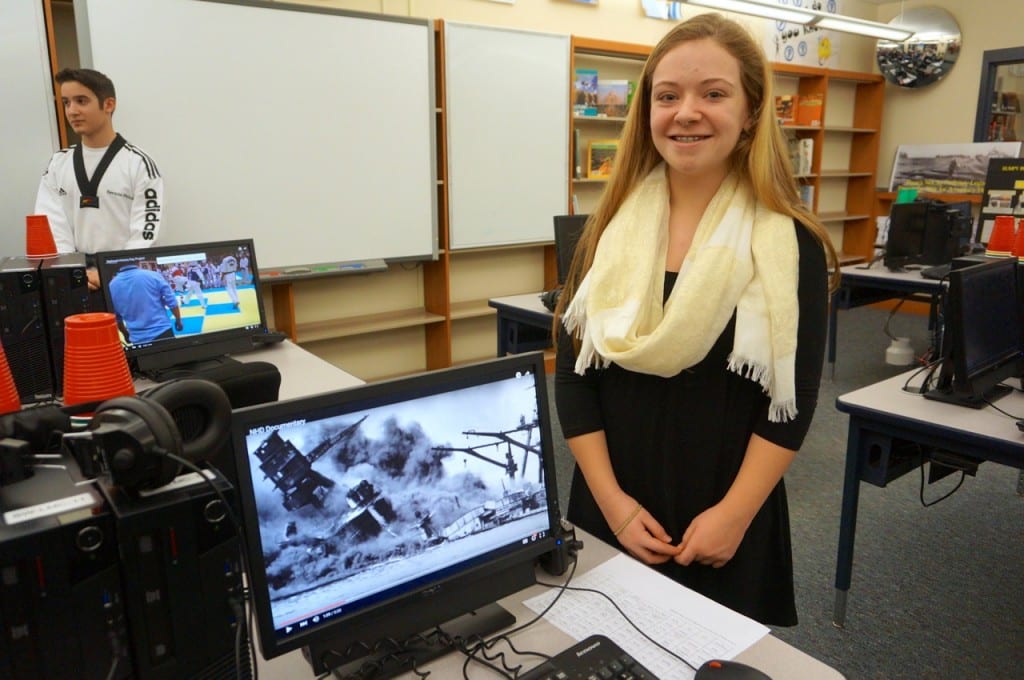
Libby Geisler’s documentary on Pearl Harbor focused on how overall security in the U.S. increased after the tragedy. Photo credit: Ronni Newton
By Ronni Newton
The topics were as diverse as the Titanic, whaling, and the invention of the polio vaccine – and the project types ranged from exhibits to websites to performances – but all together several months of work by Sedgwick Middle School eighth graders culminated in an impressive showcase Wednesday celebrating National History Day.
Students in the QuEST gifted and talented program have prepared History Day projects for several years, but this is the first year that all of Sedgwick’s eighth graders have had the opportunity to participate, Library Media Specialist Shannon McNeice said. McNeice, QuEST teacher Jennifer Hunt, and eighth grade social studies teachers Dolores Bates and Laura Elliott worked together to organize this year’s effort.
Bates said that the students do American history research projects every year, but having the showcase as a goal for all students made a big difference. “We wanted the kids to have a forum where they could share their work. There’s a greater commitment and a greater personal investment because they’re able to share their work,” she said.
The National History Day theme this year was exploration, encounter, and exchange, and the participating students had the option of presenting their work through exhibits, papers, websites, documentaries and performances. Exhibits were the most popular, with 144 students selecting that option.
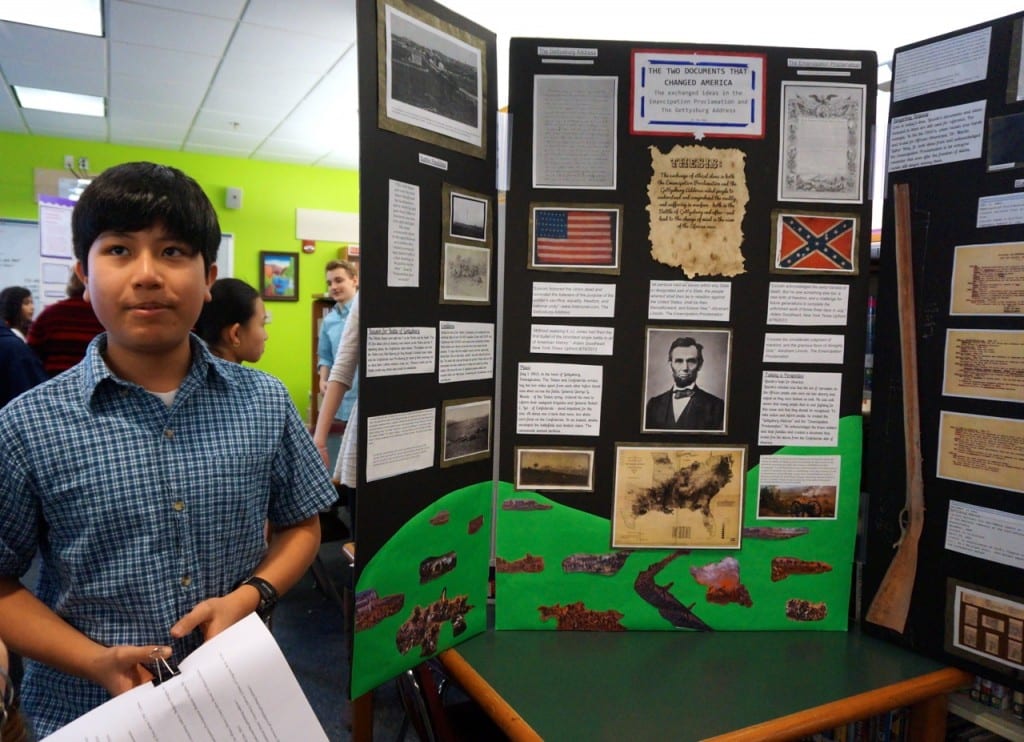
Max Mega shows off his exhibit on the Gettysburg Address and Emancipation Proclamation at History Day at Sedgwick Middle School. Photo credit: Ronni Newton
Student Max Mega’s exhibit was about the Gettysburg Address and the Emancipation Proclamation. A visit with his Boy Scout troop to Gettysburg prompted his thesis: “The exchange of ethical ideas in both the Emancipation Proclamation and the Gettysburg Address aided people to understand and comprehend the reality and suffering in warfare – both in the Battle of Gettysburg and after – and led to the change of mind in the view of the African race.”
Thanh Dao said he found the work of Jonas Salk interesting, and did his exhibit on the development of the polio vaccine – the first “killed virus” vaccine, he said.
Emma Pinckney planned to do her project on the whaling industry, but after a visit to Mystic Seaport she learned how whaling impacting the industrial revolution, and decided to combine the two for her exhibit. “In 1865 there was the rise of the industrial revolution just as whaling started to slow down. Whale oil powered the industrial revolution but as the whaling industry started to decline other sources of power were found,” she explained, showing a graph she had created.
Amy Then and Reana Mucka partnered for their project on “Native American and European Exchange of Disease” which included an exploration of the development of the smallpox and flu vaccines and an exhibit of a colonial village.
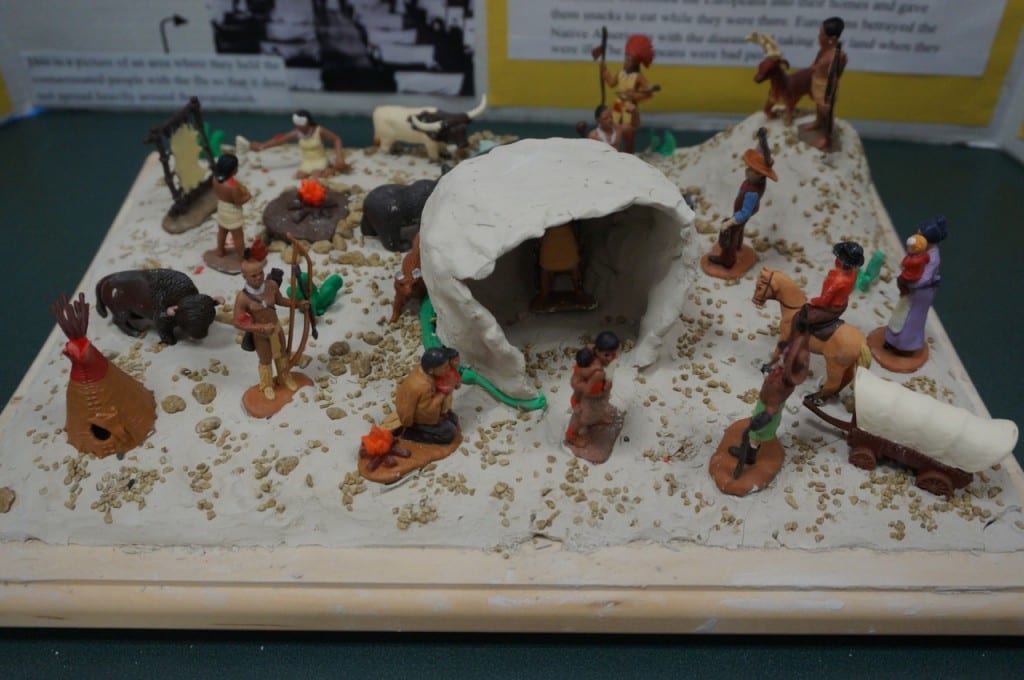
Amy Then and Reana Mucka included a colonial village in their exhibit on the Native American and European Exchange of Disease. Photo credit: Ronni Newton
Libby Geisler opted to create a documentary. “I really like working with technology – it’s one of my strong points,” she said. Her project on Pearl Harbor explored the theme of how the tragedy ultimately led to the development of greater security in the United States.
Brian Kenna chose to create an interactive website. He explored the thesis that surviving on the Titanic was directly related to the ticket price, demonstrating that those in first class had a much greater chance of survival because of their proximity to lifeboats.
The Sedgwick students’ projects were judged Wednesday by a panel of teachers, administrators, and even some students – but just for the purpose of providing the participants with feedback. McNeice said that approximately 50 of the students who have expressed a desire to participate will head to regional History Day competition, where they are judged competitively and have the opportunity to compete at a state and even national level.
“This day has been amazing,” Elliott said. “The kids have worked so hard, really taking ownership. They’re so proud,” she said.
Elliott said that it’s been great to see projects that began in October come together. “It’s really amazing – better than expected,” she said.
Like what you see here? Click here to subscribe to We-Ha’s newsletter so you’ll always be in the know about what’s happening in West Hartford!
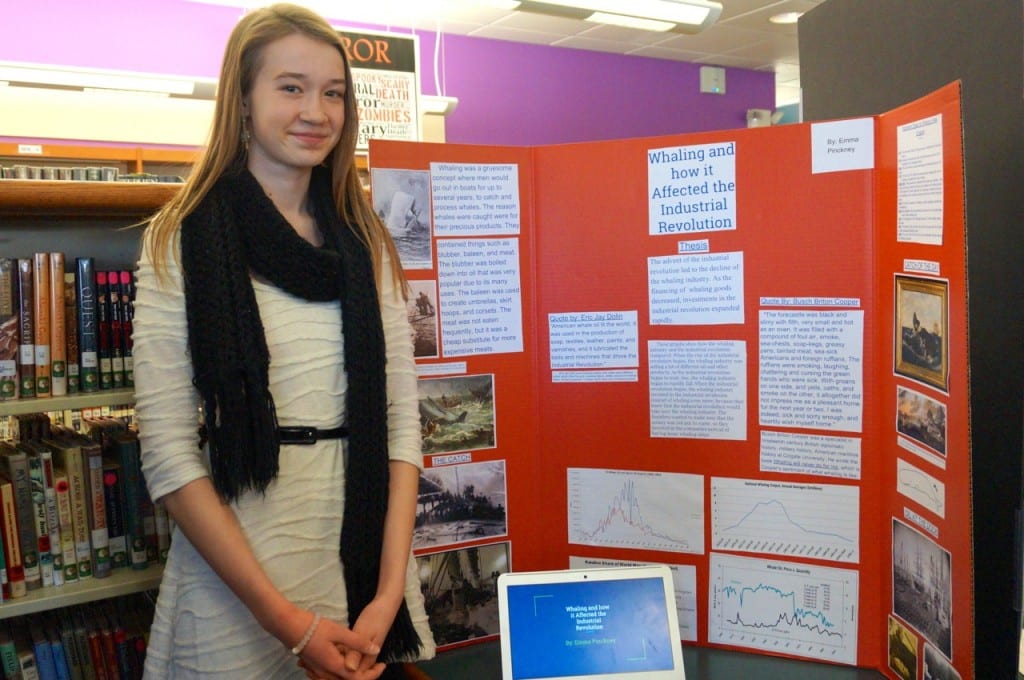
Emma Pinckney’s exhibit explored the whaling industry and its impact on the industrial revolution. Photo credit: Ronni Newton
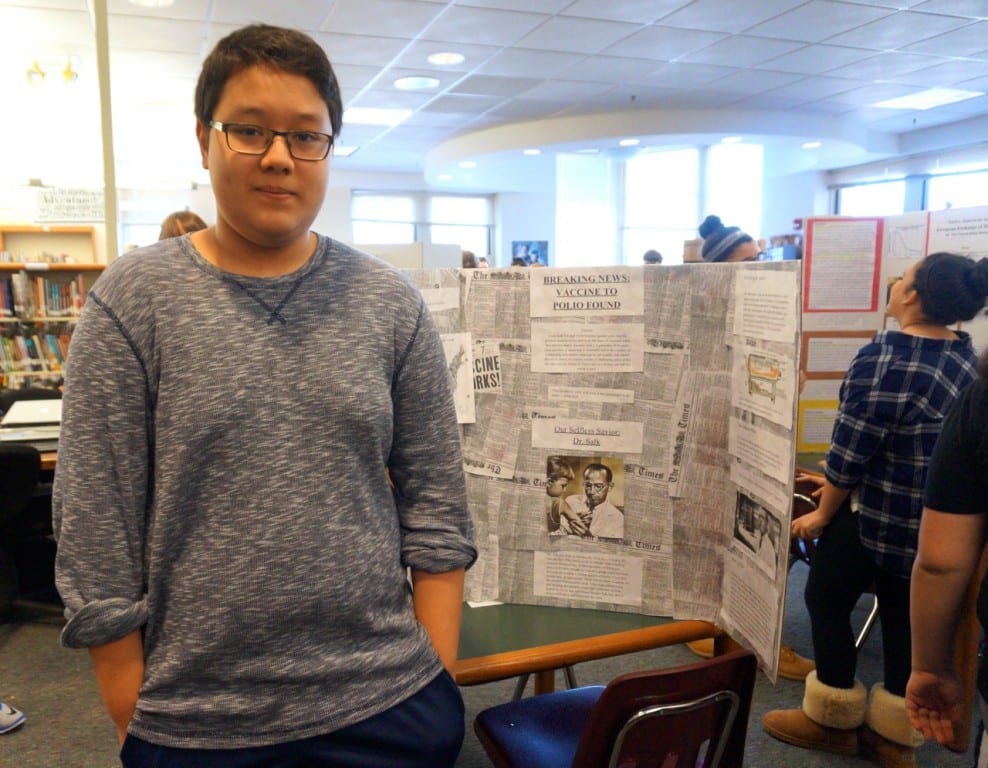
Thanh Dao researched Jonas Salk, the developer of the polio vaccine. Photo credit: Ronni Newton
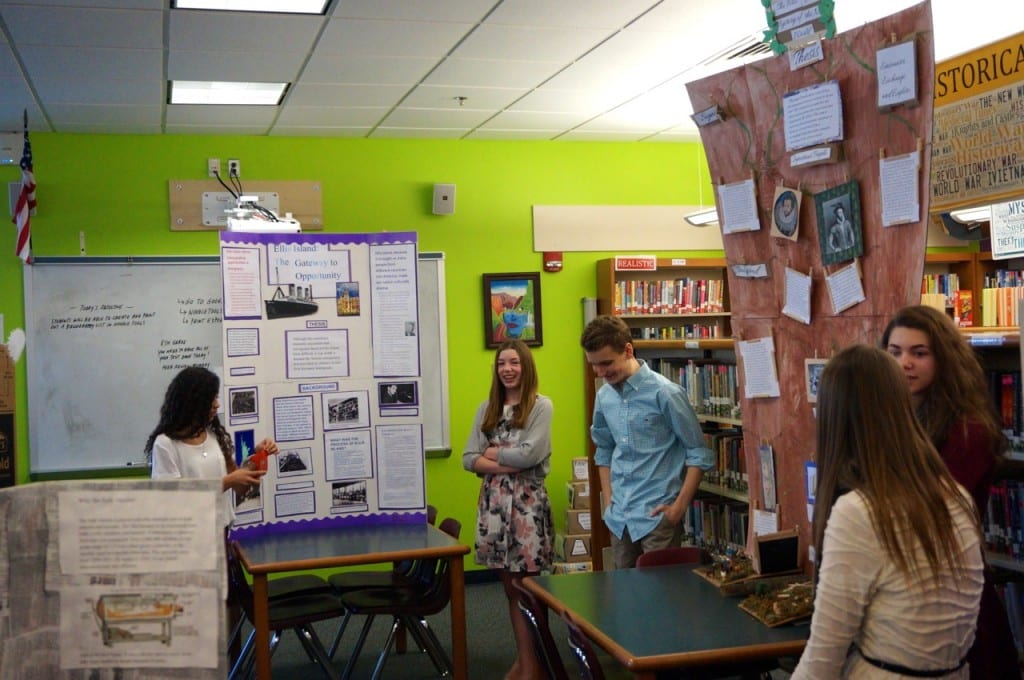
Students show off their exhibits to administrators, faculty, parents, and other students on History Day at Sedgwick Middle School. Photo credit: Ronni Newton
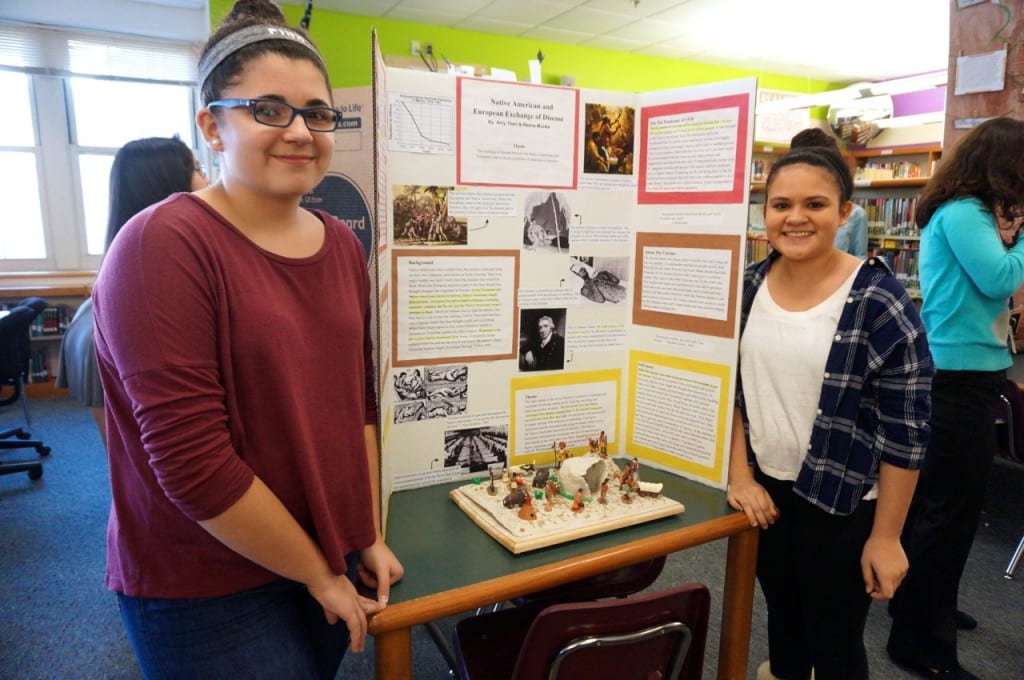
Amy Then and Reana Mucka created an exhibit about the Native American and European Exchange of Disease. Photo credit: Ronni Newton
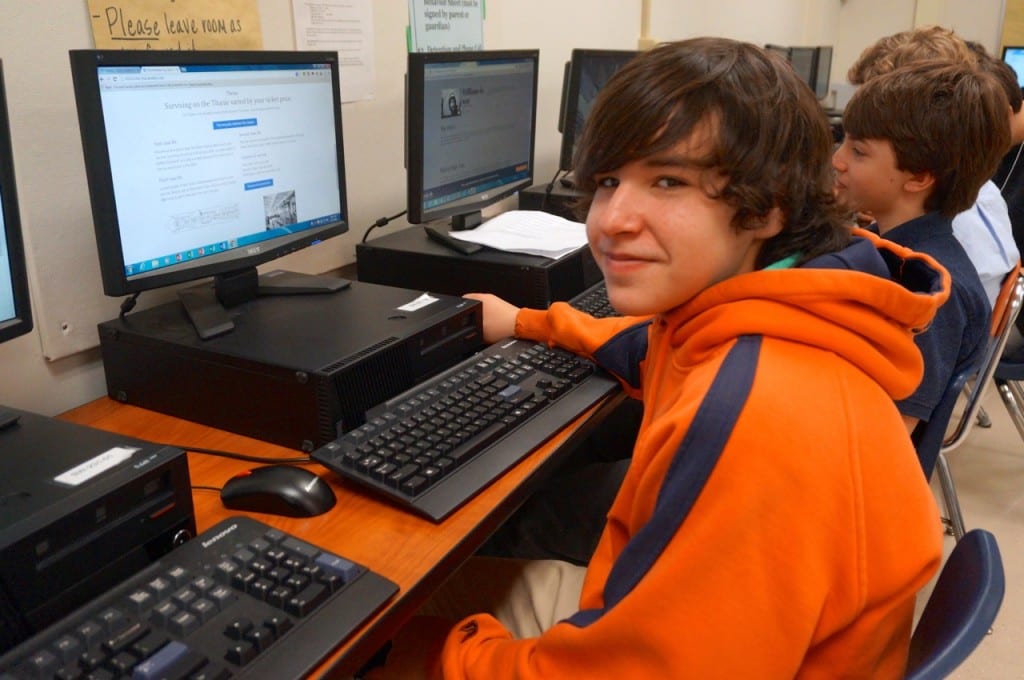
Brian Kenna created a website on the topic of how the chance of surviving the Titanic varied by ticket price. Photo credit: Ronni Newton
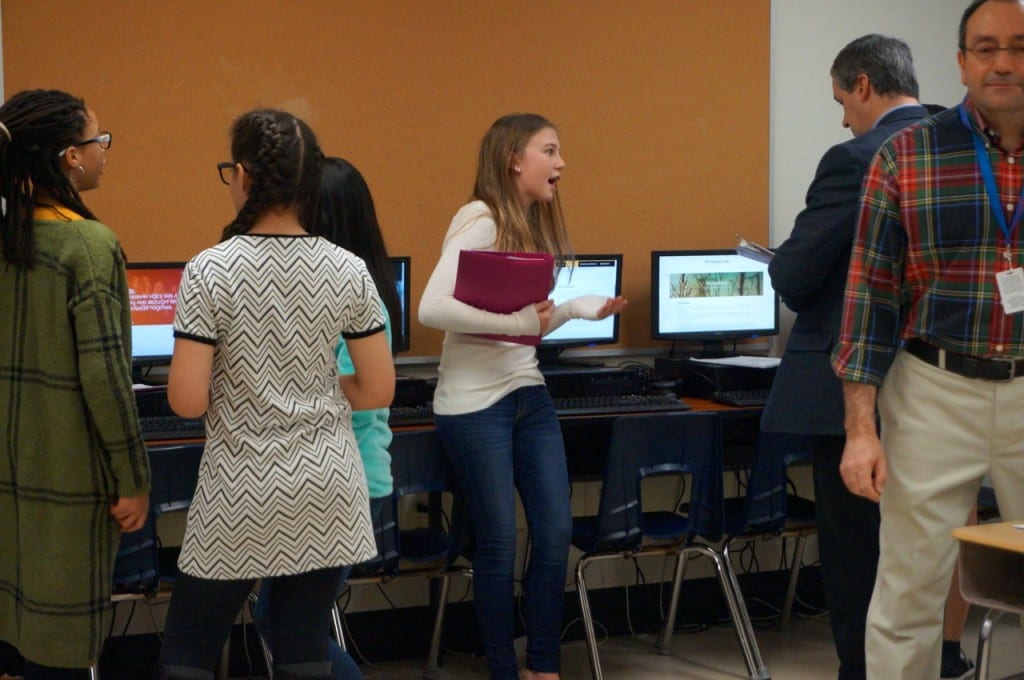
Sedgwick students explain their projects to ‘judges,’ including administrators, faculty, parents, and other students, who provided feedback. Photo credit: Ronni Newton



